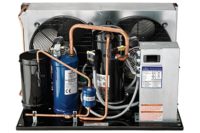Neal Verfuerth: Prior to 2001, HID (High Intensity Discharge) lighting was standard in food processing plants and warehouses.
Editor’s note: To learn about the latest in energy saving light fixtures, Refrigerated & Frozen Foodsspoke with Neal Verfuerth, president and chief executive officer for Orion Energy Systems Ltd., Manitowoc, Wis.
Refrigerated & Frozen Foods:Let’s say that a temperature-controlled building operator – a food processor or cold storage warehouse – hasn’t purchased industrial lighting for some time. In what ways have lighting technologies changed?
Neal Verfuerth: Prior to 2001, HID (High Intensity Discharge) lighting was standard in food processing plants and warehouses. With lamp temperatures operating up to 1,200
Read all about it!
Energy consumption for all lighting in the United States is estimated to be 8.2 quads, or about 22 percent of the total electricity generated nationwide, according to the U.S. Department of Energy (DOE). Because lighting represents one-fifth of national electrical consumption, DOE selected lighting as one of the principal target markets for development of more efficient technologies.Readers can stay abreast of new research by visiting:
www.eere.energy.gov/buildings/tech/lighting/index/.html

